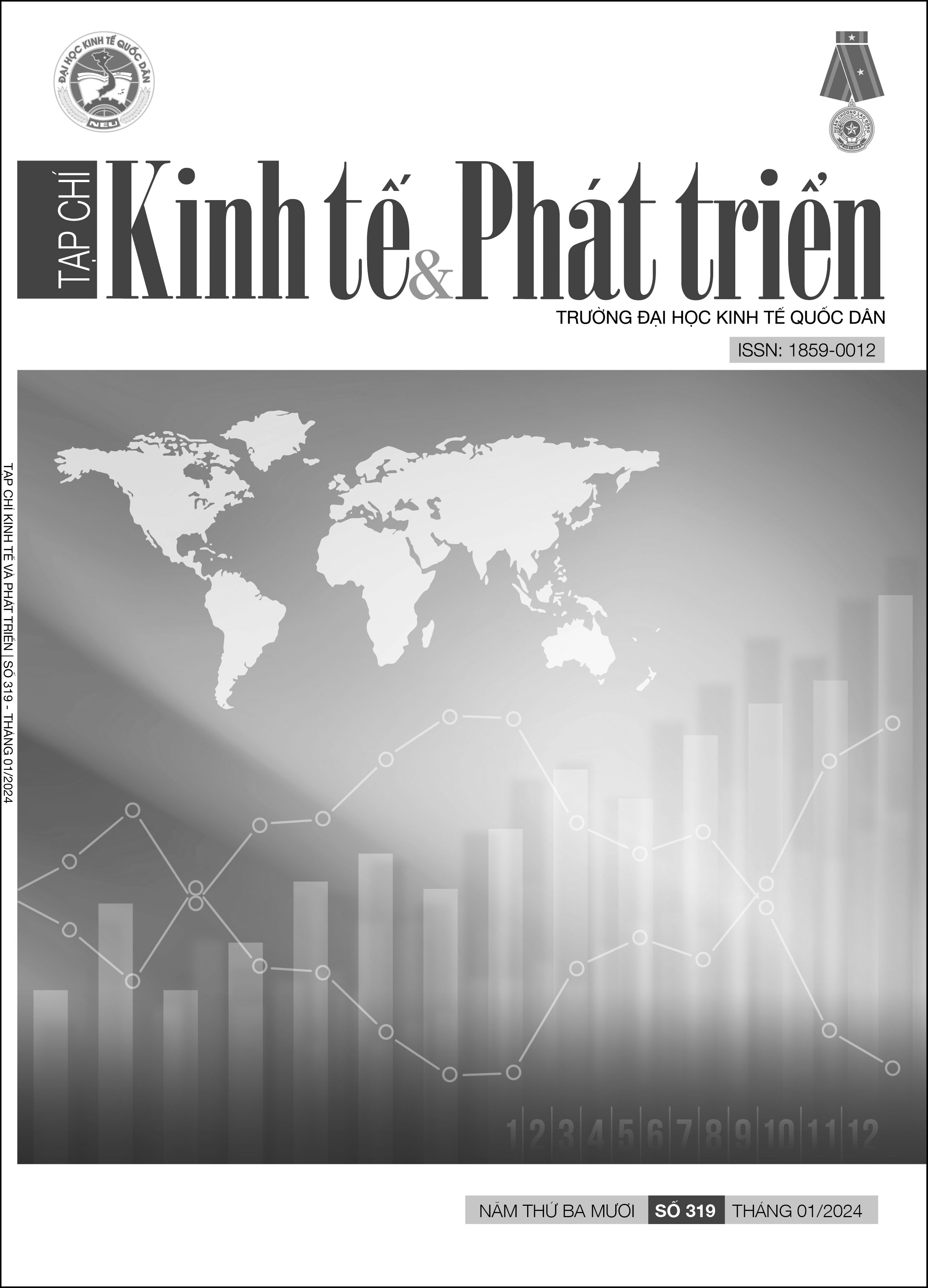Các nhân tố ảnh hưởng đến sự hài lòng của người sử dụng phần mềm kế toán: Nghiên cứu thực nghiệm tại Việt Nam
DOI:
https://doi.org/10.33301/JED.VI.1270Từ khóa:
Phần mềm kế toán, chất lượng, sự hài lòng, nhân tố, mô hìnhTóm tắt
Nghiên cứu này đề xuất mô hình, xây dựng thang đo 6 nhân tố ảnh hưởng đến sự hài lòng của người sử dụng phần mềm kế toán và thực hiện khảo sát bằng bảng hỏi với 383 lãnh đạo và nhân viên kế toán. Các thang đo được kiểm định bằng hệ số Cronbach’s Alpha, phân tích nhân tố khám phá và phân tích nhân tố khẳng định. Mô hình và 9 giả thuyết được kiểm định bằng mô hình phương trình cấu trúc. Kết quả cho thấy cả 6 nhân tố đề xuất đều có ảnh hưởng đến sự hài lòng của người sử dụng. Do đó, đánh giá phần mềm kế toán cần xét đến chức năng thực hiện công việc kế toán, chi phí đầu tư, vận hành cũng như khả năng kết nối và tương thích của phần mềm với hệ thống hiện tại của đơn vị. Bên cạnh đó, năng lực và dịch vụ của nhà cung cấp cần được đánh giá khi đầu tư hoặc nâng cấp phần mềm kế toán. Đáng chú ý, nhận thức của chính người sử dụng là nhân tố quan trọng khi xem xét sự hài lòng của họ đối với phần mềm kế toán.
Tài liệu tham khảo
Abu-Musa, A.A. (2004), ‘The criteria for selecting accounting software: A theoretical framework’, Proceeding of the 2nd Conference on administration sciences: Meeting the challenges of the globalization age, King Fahd university of petroleum and minerals, Saudi Arabia, 19-21 April.
Bộ Tài chính (2005), Thông tư số 103/2005/TT-BTC của Bộ Tài chính hướng dẫn tiêu chuẩn và điều kiện của phần mềm kế toán, ban hành ngày 24/11/2005.
Bộ Tài chính (2002), Quyết định 165/2002/QĐ-BTC của Bộ Tài chính công bố 6 chuẩn mực kế toán Việt Nam (đợt 2), ban hành ngày 31/12/2002.
Briggs, R. O., Bruce A. R., & Gert-Jan de V., ‘The yield shift theory of satisfaction and its application to the IS/IT domain’, Information Systems Theory: Explaining and predicting our digital society, 2(2012), 185-217.
Collins, J. C. (1999), ‘How to select the right accounting software’, Journal of Accountacy, New York, 188(2), 61-69.
Elikai, F., Ivancevich, D. M., & Ivancevich, S. H. (2007), ‘Accounting software selection and user satisfaction’, The CPA Journal, New York, 77(5), 26-31.
Fisher, D. M., & Fisher, S. A. (2001), ‘For Rent: Are you considering an ASP for your accounting functions?’, The National Public Accountant, Washington, 46(6), 16-18.
Fornell, C. & Larcker, D. (1981), ‘Structural equation models with unobservation variables and measurement error’, Journal of Marketing Research, 18(1), 382-388.
Ghasemi, M., Shafeiepour, V., Aslani, M., & Barvayeh, E. (2011), ‘The impact of information technology on modern accounting systems’, Procedia-Social and Behavioral Sciences, 28, 112-116.
Gerbring W.D. & Anderson, J.C. (1988), ‘An update paradigm for scale development incorporating unidimensionality and its assessment’, Journal of Marketing Research, 25 (2), 186-192. doi: 10.1177/002224378802500207
Halawi L.A., McCarthy, R.V., & Aronson, J.E. (2007), ‘An empirical investigation of knowlegde-management systems’ success’, The Journal of Computer Information Systems, 48(2), 121-135.
Hair, J. F., Anderson, R. E., Tatham, R. L., & Black, W. C. (2009), Multivariate data analysis (7th ed.). Prentice Hall International, Mew Jersey.
Hu, L. T., & Bentler, P. M. (1999) ‘Cutoff criteria for fit indexes in covariance structure analysis: Conventional criteria versus new alternatives’, Structural Equation Modeling, 6, 1-55. doi: 10.1080/10705519909540118.
Huỳnh Thị Hồng Hạnh (2021), ‘Nghiên cứu các nhân tố tác động đến sự hài lòng của người sử dụng hệ thống thông tin kế toán’, Tạp chí Kinh tế và phát triển, 283, 110-120.
Huỳnh Thị Hồng Hạnh (2020), ‘Bàn về tiêu chí đánh giá chất lượng phần mềm kế toán’, Tạp chí Kế toán và Kiểm toán, 4 (199), 38-42.
Ives, B., Olson M.H., & Baroundi J. J. (1983), ‘The measurement of user information satisfaction’, Communications of the ACM, 26 (10), 785-793.
Jadhav, A.S., & Sonar R. M. (2009), ‘Evaluating and selecting software packages: A reriew’, Information and Software Technology, 51(3), 555-563.
Mattingly, T. (2001), ‘How to select accounting software’, The CPA Journal, 71 (11), 48-52.
Melone, N. P. (1990), ‘A theorical assessment of the user-satisfaction construct in information systems research’, Management Science, 36(1), 76-91.
Oliver, R.L. (2010), Satisfaction: A behavioral perspective on the consumer, Armonk: NY, M.E. Sharpe.
Petter S., Delone W., & McLean E. (2008), ‘Measuring information systems success: models, dimensions, measures and interrelationships’, European Journal of Information Systems, 17(3), 236-263.
Seddon, P.B. (1997), ‘A respecification and extension of the Delone and McLean model of IS success’, Information Systems Research, 8 (3), 215-317.
Seddon, P.B., & Kiew, M.Y. (1994), ‘A partial test and development of the DeLone and McLean model of IS success’, Australasian Journal of Information Systems, 4(1), 90-109.
Simkin, M. G. (1992), ‘Decision support tools for choosing accounting software’, The CPA Journal Online, retrieved from http://archives.cpajournal.com/old/13856827.htm
Rai, A., Lang, S.S., & Welker, R.B. (2002), ‘Assessing the validity of IS success models: An empirical test and theoretical analysis’, Information Systems Research, 13(1), 50-69.
Võ Văn Nhị, Nguyễn Bích Liên và Phạm Trà Lam (2014), ‘Định hướng lựa chọn phần mềm kế toán phù hợp cho các doanh nghiệp nhỏ và vừa tại Việt Nam’, Tạp chí Phát triển kinh tế, 285, 2-23.
West, R. & Shields, M. (1998), ‘Strategic software selection’, Management Accounting, Montvale, August, 3-7.
Woodruff, R. B., & Gardial, S. F. (1996), Know your customer: New approaches to understanding customer value and satisfaction. Cambridge, MA: Blackwell Publications.





